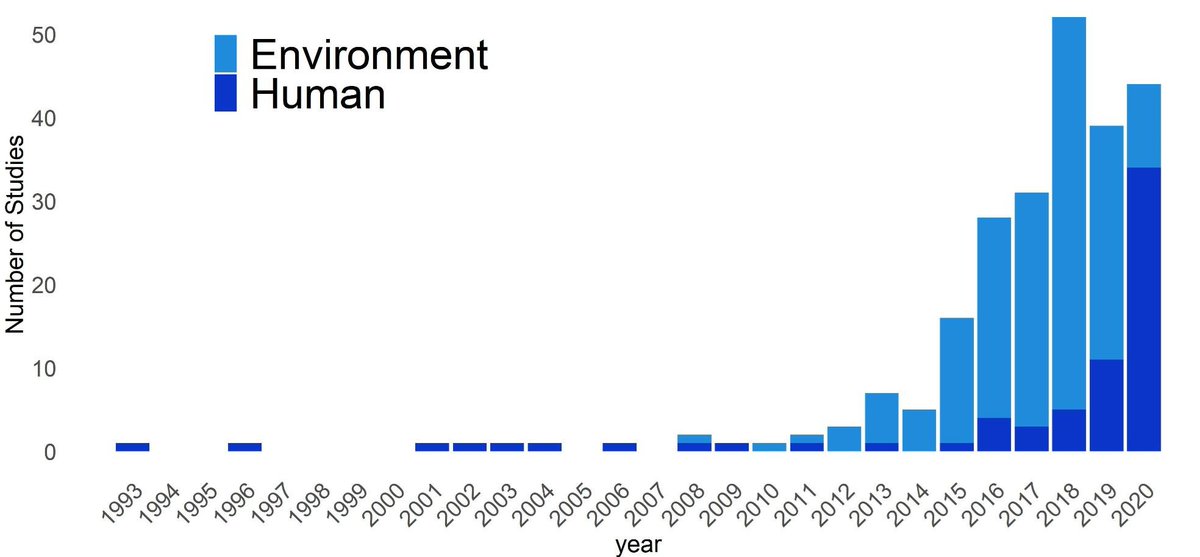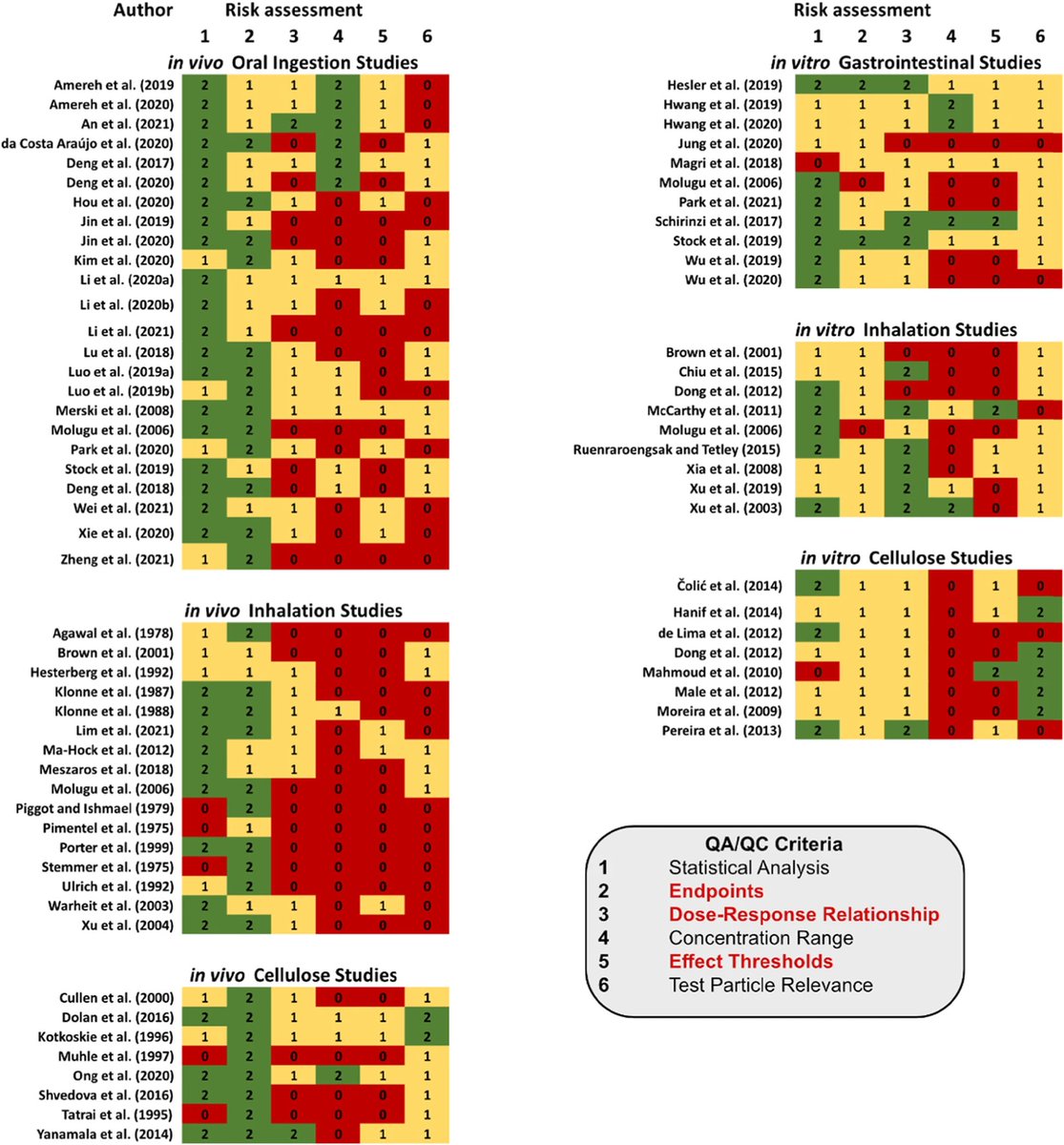Soon California will monitor #microplastics in #drinkingWater and inform consumers. Law requires @CaWaterBoards evaluate #humanHealth risks and consider developing a numerical guidance level.
We convened an expert workshop to inform the state.
🧵(1/10)
microplastics.springeropen.com/articles/10.11…
We convened an expert workshop to inform the state.
🧵(1/10)
microplastics.springeropen.com/articles/10.11…

We started by scraping the literature for toxicity studies. Of the >220 studies, 74 were relevant for humans. We focused on in vivo studies (n = 41) due to the lack of a framework for quantitative assessing in vitro particle toxicity data.
(2/10)
(2/10)

@todd_gouin et al. screened each study for relevance and reliability for understanding impacts. No single study met all criteria, so a subset was selected as being absolutely critical for evaluation (red criteria).
Most studies did not use enough doses to pass criteria.
(3/10)

Most studies did not use enough doses to pass criteria.
(3/10)


12 studies passed the first screening tier, which we then evaluated with the help of 7 external experts in each study's field. Each study and endpoint was evaluated individually.
(4/10)
(4/10)

Experts agreed that there was insufficient evidence was available to derive a regulatory level level, but that we should derive a non-regulatory screening level to inform monitoring.
(5/10)
(5/10)

7 studies reported impacts on male rodents, with 4 considered reliable by experts.
We estimated thresholds for reliable endpoints using benchmark dose modelling.
Notably, effect thresholds were fairly consistent across studies and particle sizes for polystyrene spheres.
(6/10)
We estimated thresholds for reliable endpoints using benchmark dose modelling.
Notably, effect thresholds were fairly consistent across studies and particle sizes for polystyrene spheres.
(6/10)

Using the most sensitive endpoint (AMH reduction in females), the most conservative screening level for drinking water is 91 particles/L, which is aligned to 1 to 5,000 um particles based on mass as the toxicologically relevant metric.
(7/10)
(7/10)

⚠️That conservative threshold comes with *extremely* high uncertainty - mostly driven by a lack of data for drinking water's relative source contribution and not understanding which particle trait drives toxicity (e.g., mass, surface area, volume, etc.).
(8/10)
(8/10)

While we have reliable indications of adverse impacts of polystyrene particles to male reproductive function in rodents, we need more information to quantitatively relate to humans.
@DrLeahTH et al. describe research needed to evaluate risks.
(9/10)
microplastics.springeropen.com/articles/10.11…
@DrLeahTH et al. describe research needed to evaluate risks.
(9/10)
microplastics.springeropen.com/articles/10.11…

As more toxicity studies are published, they may be uploaded to the open database in @ToMExApp to allow more rapid meta-analyses.
We also made interactive data viz for this study in the app!
microplastics.springeropen.com/articles/10.11…
We also made interactive data viz for this study in the app!
microplastics.springeropen.com/articles/10.11…

@threadreaderapp unroll
• • •
Missing some Tweet in this thread? You can try to
force a refresh




